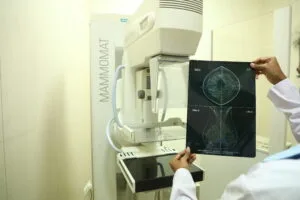Types Of Diabetes – Classifications, Diagnosis & Risk Assessment

India has an estimated 77 million people with diabetes, which makes it the second most affected in the world, after China.(1)
Over the past three decades, the burden of diabetes in terms of deaths and disability-adjusted life year (DALYs) has more than doubled in India.(2)
The incidence of diabetes in younger individuals is also on the rise.

To quantify this, we conducted an analysis of people aged 18 – 35 years who had done a preventive health check-up over the past 5 years to understand the prevalence of diabetes amongst our younger patients. From this pool of 32,000+ people, we found that:
*prediabetes and diabetes were characterized using fasting blood sugar and HbA1c results.
CLASSIFICATION OF DIABETES MELLITUS(3)
- Type 1 diabetes –
Due to autoimmune β-cell destruction, usually leading to absolute insulin deficiency, including latent autoimmune diabetes of adulthood.
- Type 2 diabetes –
Due to a progressive loss of adequate β-cell insulin secretion frequently on the background of insulin resistance.
- Gestational diabetes mellitus –
Diabetes diagnosed in the second or third trimester of pregnancy that was not clearly overt diabetes prior to gestation.
There are specific types of diabetes due to other causes:(3)
- Monogenic diabetes syndromes (such as neonatal diabetes and maturity-onset diabetes of the young (MODY))
- Diseases of the exocrine pancreas (such as cystic fibrosis and pancreatitis)
- Drug- or chemical-induced diabetes (such as with glucocorticoid use, in the treatment of HIV/AIDS, or after organ transplantation)
DIAGNOSIS OF DIABETES MELLITUS (ALL SUBTYPES)(3)
Fasting blood glucose ≥126 mg/dL (fasting is defined as no caloric intake for at least 8 hours.)
OR
2-hours post 75g glucose ≥200 mg/dL during oral glucose tolerance test.
OR
HbA1c ≥6.5%
OR
In a patient with classic symptoms of hyperglycemia or hyperglycemic crisis, a random blood glucose ≥200 mg/dL.
DIFFERENTIAL DIAGNOSIS:(3)
Because treatment can differ greatly among diabetes types, making the correct diagnosis early on is crucial. Tests which can help differentiate between type 1 and type 2 diabetes include:
- Anti GAD-65 Antibodies
- C-peptide
- Insulin
HOMA Index: Homeostatic model assessment (HOMA) is a method for assessing β-cell function and insulin resistance (IR) from basal (fasting) glucose and insulin or C-peptide concentrations. The model assumes that normal-weight subjects aged less than 35 years have an insulin resistance (R) of 1 and 100% β-cell function. HOMA can be used to assess longitudinal changes in β-cell function and IR in patients with diabetes in order to examine the natural history of diabetes and to assess the effects of treatment.
STAGING OF TYPE 1 DIABETES MELLITUS:(3)
Staging of type 1 diabetes mellitus is done using:
- Autoantibody tests like anti GAD-65 antibodies
- Fasting blood glucose, OGTT, HbA1c

RISK ASSESSMENT OF TYPE 2 DIABETES MELLITUS:
Prediabetes:
“Prediabetes” is the term used for individuals whose glucose levels do not meet the criteria for diabetes but are too high to be considered normal.(3) Patients with prediabetes are defined by the presence of impaired fasting glucose and/or impaired glucose tolerance and/or HbA1c 5.7 – 6.4%. Prediabetes should not be viewed as a clinical entity in its own right but rather as an increased risk for diabetes and cardiovascular disease (CVD).
Fasting blood glucose 100 – 125 mg/dL [Impaired fasting glucose]
OR
2-hours post 75g glucose 140 – 199 mg/dL during oral glucose tolerance test. [Impaired glucose tolerance]
OR
HbA1c 5.7 – 6.4%
Identifying prediabetes and recognizing risk earlier means you can do more to stop or delay the progression to diabetes before it becomes more complex to manage. Testing for prediabetes and/or type 2 diabetes in asymptomatic people should be considered in adults of any age with overweight or obesity (BMI ≥25) and who have one or more additional risk factors for diabetes.
CRITERIA FOR TESTING FOR DIABETES OR PREDIABETES IN ASYMPTOMATIC ADULTS:(3)
- Testing should be considered in adults with overweight or obesity who have one or more of the following risk factors:
- History of cardiovascular disease
- First-degree relative with diabetes
- Hypertension (≥140/90 mmHg or on therapy for hypertension)
- HDL cholesterol level <35 mg/dL and/or a triglyceride level >250 mg/dL
- Women with polycystic ovary syndrome (PCOS)
- Physical inactivity
- Other clinical conditions associated with insulin resistance (e.g., severe obesity, acanthosis nigricans)
- Patients with prediabetes should be tested yearly.
- Women who were diagnosed with gestational diabetes mellitus should have lifelong testing at least every 3 years.
- For all other patients, testing should begin at age 45 years.
- If results are normal, testing should be repeated at a minimum of 3-year intervals, with
- consideration of more frequent testing depending on initial results and risk status.
- HIV
MONITORING TREATMENT & SCREENING FOR COMPLICATIONS:

Following a diagnosis of diabetes, a combination of laboratory and clinical tests can be used to monitor blood glucose control, detect onset and progression of diabetic complications, and predict treatment response.
Prevalence of the 4 major diabetes-related complications in India as per the A1CHIEVE study:
SCREENING FOR DIABETES RELATED COMPLICATIONS:(5-8)

*Fructosamine: Alternative to HbA1c testing for monitoring glycemic control over the intermediate term (2 to 3 weeks) and is particularly useful when HbA1c may not be a reliable marker, such as in hemodialysis patients with high red blood cell turnover, early responses to treatment changes, and pregnancy complicated by diabetes.
OTHER TESTS:
- Vitamin B12: especially if the patient is on metformin.(8)
- Serum electrolytes: especially if patient is on ACE inhibitors, angiotensin receptor blockers or diuretics.(8)
- Liver function test, USG Abdomen
- Patients with type 2 diabetes or prediabetes and elevated liver enzymes (ALT) or fatty liver on ultrasound should be evaluated for presence of non-alcoholic steatohepatitis (NASH) and liver fibrosis.(8)
- Testosterone
- In men with diabetes who have symptoms or signs of hypogonadism, such as decreased sexual desire (libido) or activity, or erectile dysfunction, screen with a morning serum testosterone level.(8)
- Vitamin D, Bone Mineral Density Testing
- Type 1 diabetes is associated with osteoporosis, but in type 2 diabetes, an increased risk of hip fracture is seen.(8)
DIABETES MONITORING PANELS FROM SUBURBAN DIAGNOSTICS:
- DMP gold panel from Suburban Diagnostics (lipid profile, fasting blood glucose, post-prandial blood glucose, creatinine/eGFR, HbA1c, and urine microalbumin)
- Diabetes profile mini from Suburban Diagnostics (fasting blood glucose, post-prandial blood glucose, and HbA1c)
References:
- Kannan R. India is home to 77 million diabetics, second highest in the world. The Hindu [Internet]. 2019 Nov 14 [cited 2021 Oct 20]; Available from: https://www.thehindu.com/sci-tech/health/india-has-second-largest-number-of-people-with-diabetes/article29975027.ece
- GBD Compare | IHME Viz Hub [Internet]. [cited 2021 Oct 20]. Available from: http://vizhub.healthdata.org/gbd-compare
- American Diabetes Association. 2. Classification and Diagnosis of Diabetes: Standards of Medical Care in Diabetes – 2021. Diabetes Care. 2021 Jan;44(Supplement 1):S15–33.
- Current Glycemic Status and Diabetes Related Complications Among Type 2 Diabetes Patients in India: Data from the A1chieve Study [Internet]. [cited 2021 Oct 26]. Available from: https://www.japi.org/u2d48474/current-glycemic-status-and-diabetes-related-complications-among-type-2-diabetes-patients-in-india-data-from-the-a1chieve-study
- Flynn JT, Kaelber DC, Baker-Smith CM, Blowey D, Carroll AE, Daniels SR, et al. Clinical Practice Guideline for Screening and Management of High Blood Pressure in Children and Adolescents. Pediatrics. 2017 Sep;140(3):e20171904.
- Chiang JL, Kirkman MS, Laffel LMB, Peters AL. Type 1 Diabetes Through the Life Span: A Position Statement of the American Diabetes Association. Diabetes Care. 2014 Jul;37(7):2034–54.
- American Diabetes Association. 12. Older Adults: Standards of Medical Care in Diabetes 2021. Diabetes Care. 2021 Jan;44(Supplement 1):S168–79.
- American Diabetes Association. 4. Comprehensive Medical Evaluation and Assessment of Comorbidities: Standards of Medical Care in Diabetes – 2021. Diabetes Care. 2021 Jan;44(Supplement 1):S40–52.



